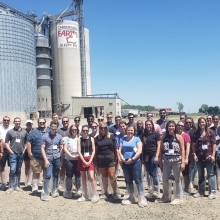Economic Dashboard shows early signs of Minnesota’s COVID-19 recovery

By Sean O'Neil
Director, Economic Research
Data provided by the Minnesota Chamber Foundation’s Center for Economic Research
The lag in standard economic data collected by state and federal agencies typically requires us to view the economy through the rearview mirror.
To address this, the Minnesota Chamber Foundation launched a new “Economic Recovery Dashboard” that tracks changes in both traditional economic measurements like unemployment and job growth as well as alternative, short-term indicators like new job postings, consumer mobility and web searches for new homes. While not a perfect science, the alternative data sources provide a real-time look at economic behavior that have implications for future economic outcomes. Together, these data paint a more complete picture of what’s happening now in Minnesota’s economy.
A review of current dashboard indicators reveals several notable findings.
Minnesota’s initial recovery is underway
First, the top line indicators show that after suffering unprecedented job losses in March and April, Minnesota’s initial recovery is underway. State unemployment dropped to 8.5% after peaking at 9.9% in May, and total employment rose for a second straight month. While some counties like, Cass, Itasca, and Lake (which rely heavily on hospitality), have been hit particularly hard, the state’s overall unemployment rate remains well below the U.S. rate of 11.1%. Minnesota’s diverse economy and concentration of jobs in sectors relatively less impacted by COVID-19 are likely a contributing factor.
Despite job gains, some caution remains
Second, while the recent job gains are an encouraging sign, the Dashboard’s index of hourly work levels from local tech company, “When I Work,” reveals some reason for caution. The index shows that hourly work levels rose in June – aligning with recent employment data – but have since flattened, pointing to a potential softening in Minnesota’s recovery.
Indicators like this—while not comprehensive in their scope—provide early signs of changes that might not show up in official reporting until a month or two later. It is yet to be see whether the July employment data will reflect the softening seen in the When I Work index. We can hope not. But higher frequency touch points such as this provide at least some clues about what might be happening in between official economic data releases.
Health care and manufacturing are strengths in our economy
Not surprisingly, Minnesota’s employment is disproportionately concentrated in health care, manufacturing, corporate headquarters, and finance and insurance. These sectors are of outsized importance in Minnesota’s economy. Health care saw the biggest one month rebound in employment of Minnesota’s four most concentrated sectors, as voluntary procedures came back online.
Other indicators to watch
Finally, the Economic Recovery Dashboard shows several indicators of economic recovery that should be watched closely in coming months. For instance, new business filings increased in June to 6,530 from low point in May of 5,681. And while home sales are down 12% compared to last year, web visits to Zillow have increased significantly this spring and summer. This could indicate interest future home buying and selling.
Today’s launch of the Economic Recovery Dashboard is just the beginning. The Minnesota Chamber Foundation hopes that you will use this as a resource to better understand our economy, and how businesses can recover from the shock of COVID-19. We will continue to provide data and analysis as they are available.
Chamber Foundation online dashboard offers real-time updates
The Minnesota Chamber Foundation economic dashboard is, aimed at providing real-time updates on Minnesota’s economy as the state begins to recover from the shock of COVID-19. This online portal offers indicators and analysis of employment and income, business recovery and consumer and business spending.


